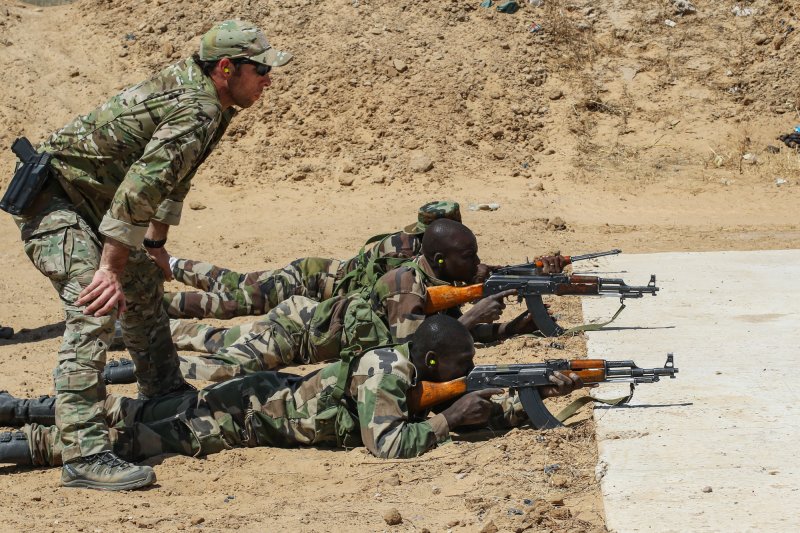Locals may have helped Islamic State ambush Green Berets in Niger

The 12-man team of Green Berets ambushed in Niger were delayed as they left a meeting with local leaders — which may have been part of the plan to attack them, Army officials told UPI.
Officials suspect that some people in the Oct. 4 Tongo Tongo meeting may have been working with the Islamic State. Some people from the town have been arrested.
The attack, in which four U.S. soldiers were killed — including one who was not found until nearly 48 hours later, was a surprise. Intelligence had indicated the likelihood of an attack was low.
Five soldiers from Niger were also killed.
Defense Secretary James Mattis said Thursday he had little information to share about the ambush.
“We at the Department of Defense like to know what we’re talking about before we talk,” Mattis told reporters. “And so we don’t have all the accurate information yet. We will release it as rapidly as we get it.”
A team of investigators led by a one-star general has been sent to West Africa on a fact-finding mission, the Pentagon said.
The military and intelligence community are working to piece together a detailed sequence of the day’s events.
It is known that four U.S. Army soldiers were killed and two were wounded in what is the deadliest combat mission since President Donald Trump took office in January.
The team was on its way back from a “key leader engagement” with residents in Tongo Tongo, in the southwestern region of Niger near the Mali border when they were attacked by as many as 50 militant fighters thought to be affiliated with the Islamic State in the Greater Sahara.
Staff Sgts. Dustin M. Wright and Bryan C. Black were killed in the ambush along with chemical, biological, radiological and nuclear specialist Staff Sgt. Jeremiah W. Johnson. Sgt. La David Johnson’s body was recovered 48 hours later by Nigerien forces in a remote, northwestern region of Niger.
The team came under a complex ambush, consisting of small arms fire, machine guns and rocket-propelled grenades, members of the Green Berets familiar with the mission told UPI.
The firefight lasted more than 30 minutes, with French jets flying overhead in a “show of force” in an attempt to drive out the militants.
It is unclear when Johnson was separated from the other members of his unit, but a massive search was mounted for him.
“[The] U.S. military does not leave troops behind, and I would just ask you to not question the actions of the troops who were caught in the firefight and question whether or not they did everything they could in order to bring everyone out at once,” Mattis told reporters.
Joint Staff Director Lt. Gen. Kenneth F. McKenzie told reporters Thursday that a joint effort made up of U.S., French and Nigerien forces were involved in what’s called a tactical recovery of aircraft and personnel, or TRAP, mission. McKenzie said the joint task force did not leave the area until Johnson was located.
The four U.S. soldiers were part of 2nd Battalion, 3rd Special Forces Group and had deployed to the region in July.
Historically, advise, train and assist missions are the bread and butter of what U.S. Army Green Berets do. They are specifically trained in force multiplication, which means Green Berets work with foreign militaries to build security in allied countries in the name of U.S. national security interests.
After the wars in Iraq and Afghanistan began to wind down, a 2015 U.S. Special Operations Command directive reassigned 3rd Special Forces Group, out of Fort Bragg, N.C., to their African mission.
The unit is nicknamed the “Bush Hogs” for their legacy in the region under the command authority of U.S. Africa Command. Before 3rd Group, the Army’s 10th Special Forces Group, out of Fort Carson, Colo., was assigned to Africa.
Source:-UPI